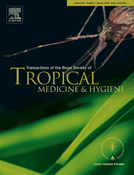-
Views
-
Cite
Cite
Gregory Spanakos, Evangelia-Theophano Piperaki, Panagiotis G. Menounos, Nicholas Tegos, Alexander Flemetakis, Nicholas C. Vakalis, Detection and species identification of Old World Leishmania in clinical samples using a PCR-based method, Transactions of The Royal Society of Tropical Medicine and Hygiene, Volume 102, Issue 1, January 2008, Pages 46–53, https://doi.org/10.1016/j.trstmh.2007.05.019
Close - Share Icon Share
Summary
The aim of this study was to develop a simple, low-cost method for the detection and species differentiation of Leishmania directly from clinical samples, for routine use in a parasitology laboratory. A total of 87 samples was used, including 60 peripheral blood, seven bone marrow and 17 skin lesion material samples, derived from Greek patients with visceral or cutaneous leishmaniasis, and three reference strains. PCR was performed using primers designed to amplify the internal transcribed spacer 1 (ITS1) region of the rRNA gene. Identification of the Leishmania species studied was achieved by digestion with a single restriction endonuclease (RFLP), single-strand conformational polymorphism (SSCP) and DNA sequencing of the PCR-generated fragments. Typing identified all visceral and one cutaneous leishmaniasis strains as L. infantum, twelve of the cutaneous leishmaniasis strains as L. tropica and four as L. major. The described PCR method proved efficient for the detection of pathogenic Leishmania species in various clinical samples, most importantly in peripheral blood samples. Furthermore, PCR followed by a simple RFLP using a single restriction endonuclease was capable of identifying all Leishmania species commonly encountered in Greece.






Comments